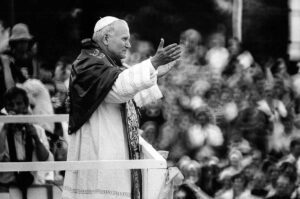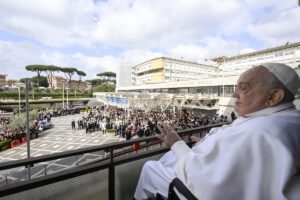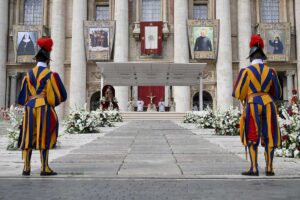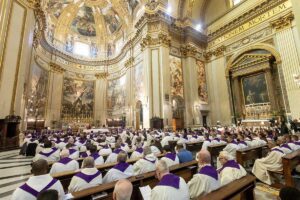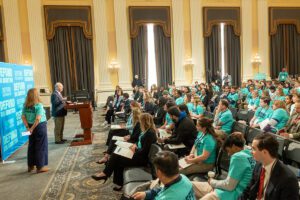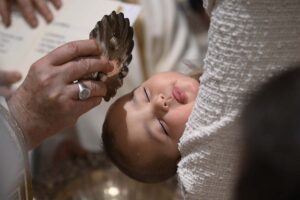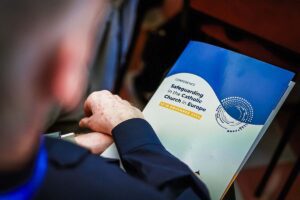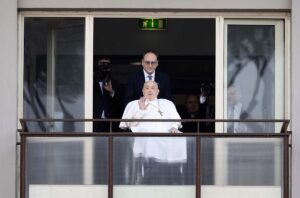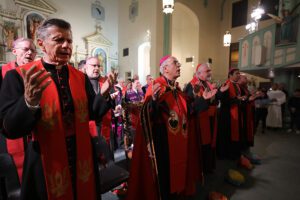(OSV News) – In 2015, Pope Francis shared an urgent message with the world.
Writing in “Laudato Si’, on Care for Our Common Home,” he said the Earth “cries out to us because of the harm we have inflicted on her by our irresponsible use and abuse of the goods with which God has endowed her.”
With the 10th anniversary of the release of “Laudato Si'” approaching May 24, experts wonder: Have we been listening?
Several Catholic ecological experts and organizations agree that good – even great – work is being done to address climate issues. But, they say, it is not enough.

Pope Francis said so himself in 2023 when he penned “Laudate Deum,” an apostolic exhortation “to all people of good will on the climate crisis,” released eight years after “Laudato Si’.”
“With the passage of time,” said Pope Francis, “I have realized that our responses have not been adequate, while the world in which we live is collapsing and may be nearing the breaking point.”
The pope further forecast a bleak global future, with widespread impacts on human dignity.
“In addition to this possibility, it is indubitable that the impact of climate change will increasingly prejudice the lives and families of many persons,” Pope Francis wrote. “We will feel its effects in the areas of healthcare, sources of employment, access to resources, housing, forced migrations, etc.”
Pope Francis’ concern about such outcomes is rooted in integral ecology — a central tenet of “Laudato Si'” that emphasizes the interconnectivity of the many issues facing humanity, while urging a comprehensive outlook to engage global challenges.
Brother Jacek Orzechowski — a Franciscan friar and associate director of the Laudato Si Center for Integral Ecology at Siena College in Loudonville, New York — echoed the pontiff’s warning.
“The speed and the scale of the progress has not been commensurate with the gravity and urgency of the crisis,” Brother Orzechowski said.
“It’s a consequence of not really embracing the message of an integral ecology, and treating the environmental issues, climate issues, social justice issues, as not on par with other moral issues,” he said. “There’s a bit of a disconnect between the papal pronouncements and some of the laudable efforts of individual parishes or institutions to embrace ‘Laudato Si’,’ and the rather anemic response — including from the hierarchy.”
In 2021, Religion News Service examined thousands of columns written by Catholic bishops from 2014 to 2019. “Of the 12,077 columns we studied,” reported RNS, “only 93 (0.8%) mention climate change, global warming or their equivalent at all.”
“Pope Francis, in ‘Laudate Deum,’ has rightly expressed concern about the pace of progress in addressing climate change,” said Dan Misleh, founder and executive director of the Catholic Climate Covenant, a nonprofit formed with the help of the U.S. Conference of Catholic Bishops that — with 20 national partners — guides the church’s response in the U.S. to climate change.
“The Holy Father has called for not just deeper reflection but concrete action, highlighting the need for a radical shift in our lifestyles to align with a sustainable and finite planet,” Misleh added. “The growing urgency around these issues is something we all must heed.”
Misleh is, however, encouraged by the work of his own partners, as well as the Laudato Si’ Action Platform and the Laudato Si’ Movement, among other organizations.
“Obviously there’s a lot of work to be done,” Misleh said. “And I think we can do it — but there has to be commitments at many levels of the church to make that happen.”
The last decade is the warmest on record, and according to NASA, Earth’s average surface temperature in 2024 was the warmest since recordkeeping began in 1880. The World Meteorological Organization noted in March 2024 that the previous year broke records for ocean heat, sea level rise, Antarctic sea ice loss and glacier retreat. Extreme weather events including floods, droughts and fire are becoming more frequent and destructive.
In America, the new Trump administration has retreated from Biden-era climate and clean energy initiatives. It also withdrew U.S. participation in the Paris Agreement adopted in 2015 at the U.N. Climate Change Conference, also known as COP21, when nearly 200 countries pledged to work together to limit global warming.
“There’s progress — and yet there’s still so much more to do,” said Anna Johnson, North American director for the Laudato Si’ Movement, a global network of over 900 Catholic organizations and over 10,000 trained grassroots leaders.
“Tens of thousands of people, Catholics around the world, have said yes to living out this call to ‘Laudato Si” on personal levels, on community levels — with parishes and dioceses and congregations adopting huge transformations,” she told OSV News.
Nonetheless, Johnson feels efforts are at a crossroads.
“We’re coming to a point of having to really assess whether we stand for the common good and God’s creation in the midst of this economy,” Johnson said, “because these choices are being put in front of us in a very stark way.”
In 2023, the Pew Research Center reported that a 2022 survey found, “Broadly speaking, Catholics are no more likely than Americans overall to view climate change as a serious problem. An identical share in each group say global climate change is either an extremely or very serious problem (57%).”
But the particular dynamics of the American political landscape have seemingly produced a fragmented reception of “Laudato Si’.” The 2022 Pew survey found that among Catholics who were Democrats or leaned Democrat, the view of global climate change as a “extremely/very serious problem” problem climbed to 82%, while among Catholics who were Republican or leaned Republican, that view dropped to 25%.
“There is polarization between political factions that has weakened this response to the call for creation care,” said Sister Damien Marie Savino, a Franciscan Sister of the Eucharist who is dean of science and sustainability at Aquinas College in Grand Rapids, Michigan, and is a visiting fellow at the University of Notre Dame in Indiana.
Sister Damien Marie is encouraged by global efforts to embrace “Laudato Si’,” noting there are an abundance of initiatives large and small — from regenerative agriculture to recycling — that deeply resonate with the pope’s integral ecology emphasis.
“There’s still a lot more that could be done,” she admitted, “but I do think this groundswell is a pretty good testament.”
However, she remains cautious in her outlook.
“It’s up to humans — and their unique creativity — to come up with solutions,” she said. “We wouldn’t have environmental issues if it wasn’t for human action. So we have to recognize that our actions do have a unique effect because of our unique ecological niche.”
At Notre Dame’s Kroc Institute for International Peace Studies, scholars will reflect on “Laudato Si'” in an April 15 panel titled “Ten Years of Laudato Si’: Operationalizing Integral Ecology.”
“I think there are small outcroppings of things that actually wholly align with ‘Laudato Si’,’ but it’s certainly not at any accelerating rate that’ll make a substantive difference,” said Richard Marcantonio, an assistant professor of environment, peace and global affairs at the Kroc Institute.
“There’s been progress that’s been made in some ways,” he said, “but I think one of the big challenges of ‘Laudato Si” that has not been grappled with well, in the United States in particular, is the idea of not needing more.”
It is a tough truth for a consumer-centric society, he noted.
“When you look at the amount of material consumed by any American — regardless of the wild wealth inequality that we have — for most groups of people in the U.S., they’re consuming well above what would be globally sustainable,” Marcantonio said.
“And that’s not just with the stuff in their household, but also all of the metals, minerals and other materials that are used to build the things that they engage with — roads, buildings, other infrastructure. If you look at the amount of material consumed per capita annually, it’s about 42,000 pounds of stuff,” Marcantonio said, citing the U.S. Geological Survey.
While experts see both environmental progress and decline, real change and real stagnation, and much work done with much work still to do, Pope Francis did not want “Laudato Si'” to be a source of despair. Ten years later, he might reiterate the piece of advice with which he concluded ‘Laudato Si”: “May our struggles and our concern for this planet never take away the joy of our hope.”

